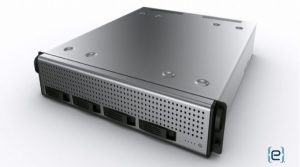Study after study shows an unmistakable trend in how organizations store and retrieve essential business data. In 2017, the pace of cloud migration accelerated, with more businesses moving data off-site and off dedicated servers. Experts predict that trend will continue in 2018 and beyond.
A recent Cisco study suggests that by 2021, cloud data centers will process 94 percent of workloads.
A number of factors contribute to the increase in cloud computing and the decline of dedicated servers. Cloud technology has finally matured to a degree that overcomes traditional opposition to cloud migration. At the same time, on-premises data centers are aging, and keeping those facilities up-to-date is no longer cost effective for many companies.
In addition, cloud providers and businesses alike have recognized that an all or nothing approach often no longer makes sense. Organizations can harness the benefits of both on-premises and cloud solutions, designing the optimal solution to promote business success.
A better understanding of the factors involved helps to ensure that companies design the best configuration to meet business goals.
Advantages of Cloud Computing
For small businesses, cloud services offer an unprecedented economy of scale. The cloud provider maintains all equipment and provides both security and expertise. For a monthly fee, businesses gain access to up-to-date technology and software, 24/7 support and a high level of business cyber-security.
Cloud computing also provides exceptional scalability and flexibility. Unlike dedicated servers, adding additional storage or users in the cloud environment requires no downtime. As your company expands, your system easily grows with you. In addition, the cloud makes remote access simple, empowering today’s mobile workforce.

Still a Place for Dedicated Servers
While the trend clearly leans toward the cloud, dedicated servers remain a viable option for some workloads. Dedicated servers offer control and exclusivity, which can prove important in some highly regulated industries.
And because data is processed locally, on-premises servers can deliver greater processing speed.
Colocation facilities furnish the benefits of local, dedicated servers while easing the maintenance burden. Typically, the colocation data center provides the physical space, including cooling, power, bandwidth, and physical security. Businesses buy or rent servers in the space.

Best of Both Worlds
Fortunately, the industry recognizes that the best option for many organizations involves a hybrid approach. Some workloads migrate easily to the cloud and benefit from the scalability and flexibility available there. Other workloads may never prove cloud-ready.
A combination of cloud services and dedicated servers, or hybrid approach, allows businesses to take advantage of the benefits both environments offer.
For instance, an organization may run back-end applications on dedicated servers and use cloud services to host sales and productivity software-as-a-service (SaaS) applications, such as Office 365, used by employees in multiple locations.
Implementing the Right Solution for Your Business
Choosing the best combination of options for your organization requires careful planning. Whether you opt for a cloud first or cloud only solution or move toward a hybrid approach, you will need to carefully outline a migration path.
Partnering with experts who know the options available makes all the difference. For nearly two decades, eMazzanti has helped businesses design and implement secure cloud and on-premise IT solutions in retail, manufacturing, local government and other industries.







